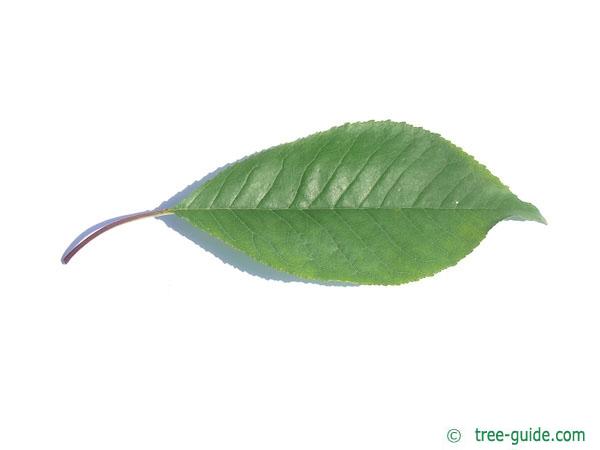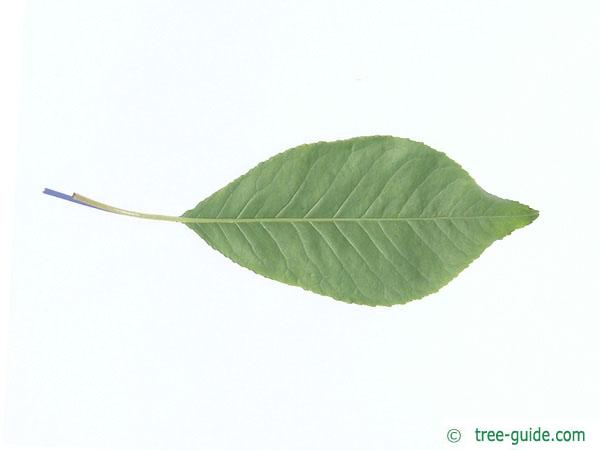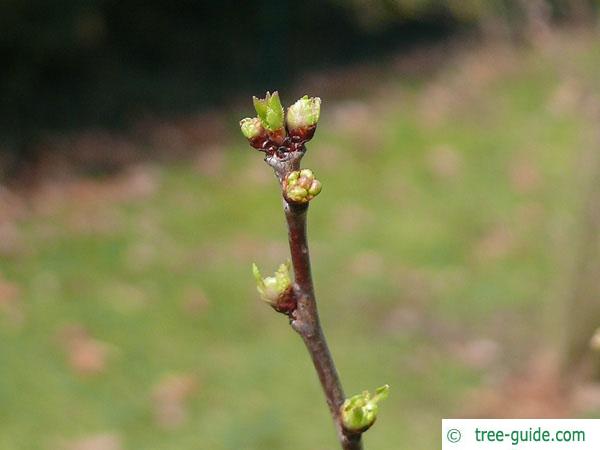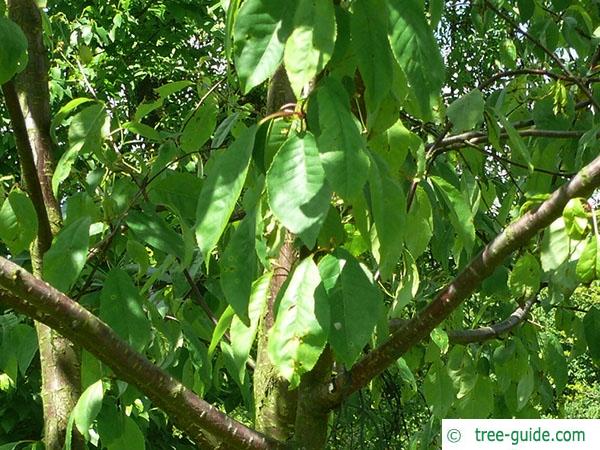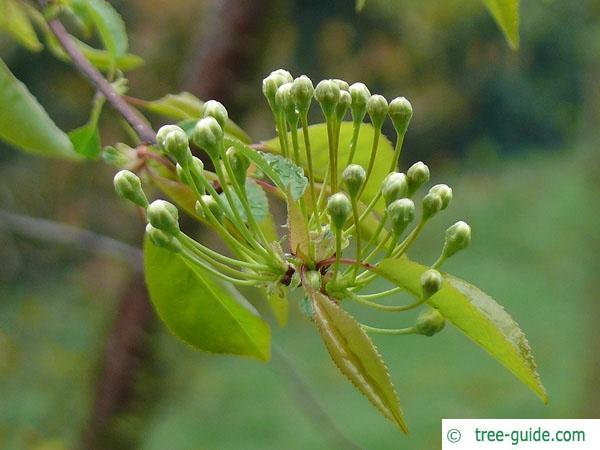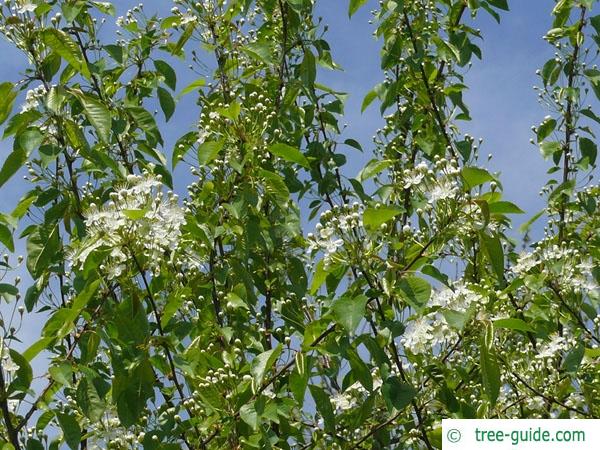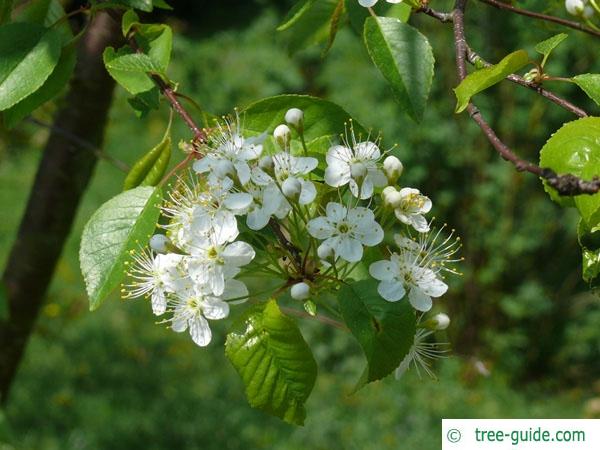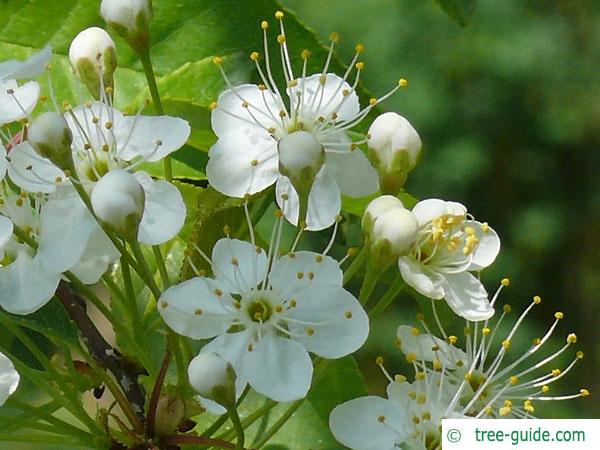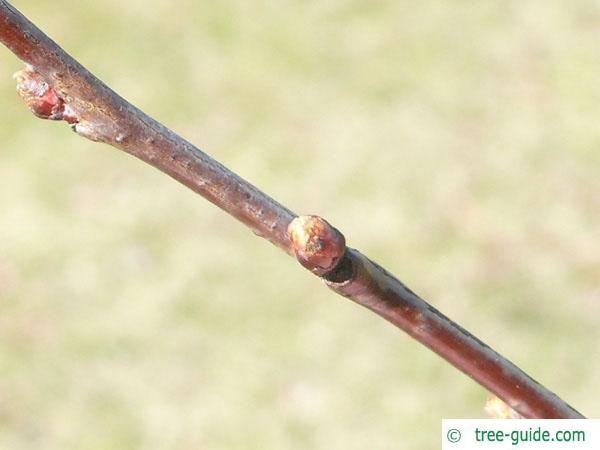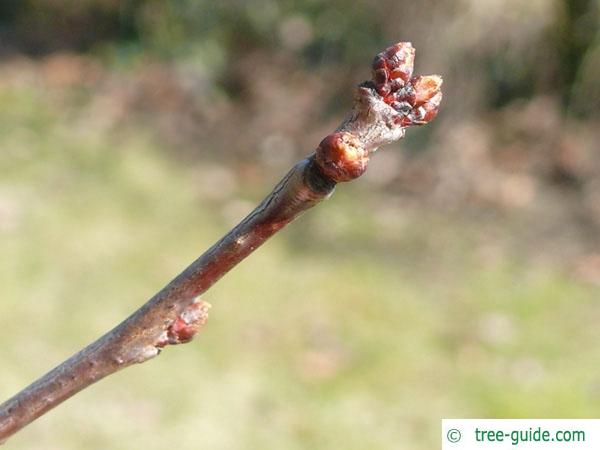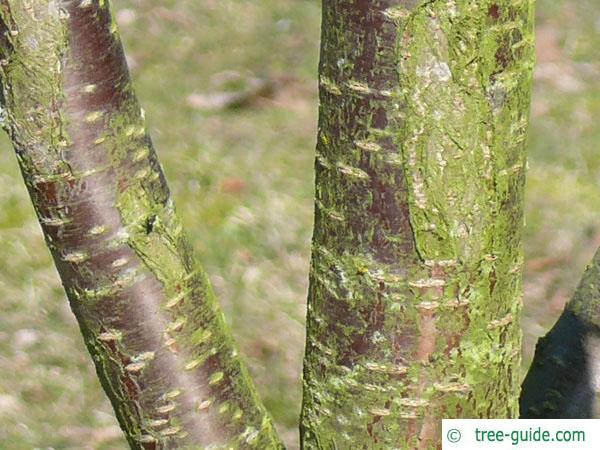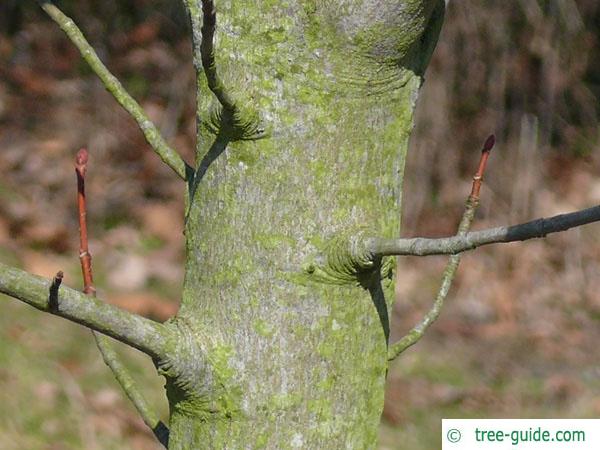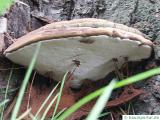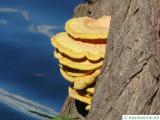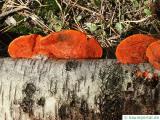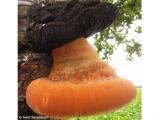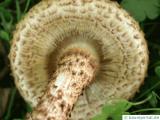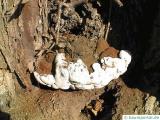Basisdaten
The natural occurrence of these cherry extends between north and south of the border between the U.S. and Canada. The seeds of the cherry are fire resistant and shoot as first after a forest fire, so that there is a shrub encroachment of the area by the cherry.
Tree profile
The leaves of Fire cherry is green, glossy and lanceolate. The leaves are 4 - 11 cm (1.6 - 4.3 in) long and 1 - 4.5 cm (0.4 - 1.8 in) broad. The leaf margin is finely serrated.
The flower is white, standing on long pedicels. The anthers are yellow. The flowers are umbel-like together.
The red stone fruits taste sour but edible.
The twigs are red-brown with bright lenticels. The young branches are perpendicular often high. The buds are red, egg-shaped and protruding.
single tree, planting in groups
Cherries additional information
overview leaves | overview blossoms | overview fruit | overview trunkoverview winter | | overview trees







